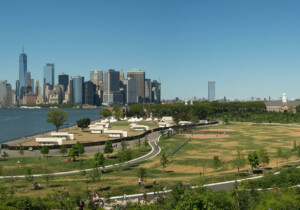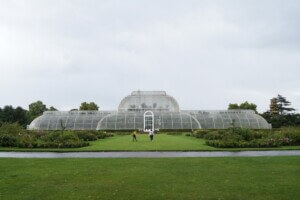Much of Roosevelt Island is vast patches of grass, fields and small playgrounds that contains minimal biodiversity compared to other parts of the city. The long strip of land in New York’s East River formerly housed a mental hospital, penitentiary, and housing for the poor in its early years and today many buildings on the island are industrial relics or occupied by Cornell University. In 1961, the New York AIA chapter proposed converting it into the park land it is known as today. Still containing housing and historical landmarks, Roosevelt Island has stood out as a marker of climate change given its harsh surrounding body of water. A project by SUGi hopes to illuminate and stop the rapid indulgence of climate effects to the island.
SUGi, founded by Elise van Middelem, is a foundation that missions itself to replant trees in urban and affected areas. SUGi has adopted the Miyawaki method, a formula for tree afforestation that allows for trees to grow 10 times faster and reach maturity at much quicker rate. SUGi hopes to protect the Roosevelt Island’s 12,000 residents from future storm surges and the Manhattan Healing Forest might just be the answer.
View this post on Instagram
SUGi stated in an Instagram post that the “Manhattan Healing Forest serves as a miniature lung for Manhattan, providing habitat for migratory birds, butterflies, and a variety of urban wildlife.” The forest, currently named Southpoint Park, is slated to be at the southern end of Roosevelt Island. The new forest will not only be an added attraction that the island (and city) desperately use, but also a center for biodiversity. The foundation is working alongside nonprofits iDig2Learn and Big Reuse on the project.
SUGi has helped numerous cities and parks all over the world. The forest on Roosevelt Island would be the foundation’s 200th project. Its notable work in India helped Mumbai’s critical and obvious air pollution problem into a step forward into climate change cleaning. SUGi has also created forested areas in other countries such as France, Japan, and Scotland. In Cambridge, Massachusetts, the foundation worked on a self-sustaining forest of 1,400 trees at Danehy Park, a previous landfill.
The Manhattan Healing Forest will contain a plethora of native species that will help further restore the New York environment. White Oak, New York Fern, Yellow Birch, and Eastern Pine are all flora that will contribute to the new lung of the city that sequesters carbon, forms an arboreal barrier to stunt erosion and flooding, improve air quality, and nurture new habitats for wildlife to thrive in.
View this post on Instagram
The SUGi Project demonstrates the community ethos of nature solving. Locked-in to have 1,000 trees, SUGi’s collaboration with Roosevelt Island understands the protection trees bring to both humans and their environment.











